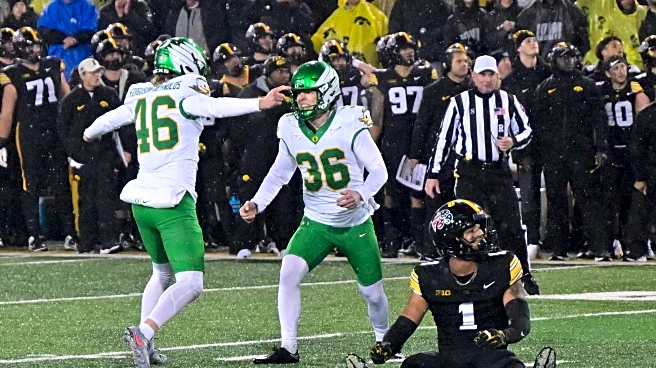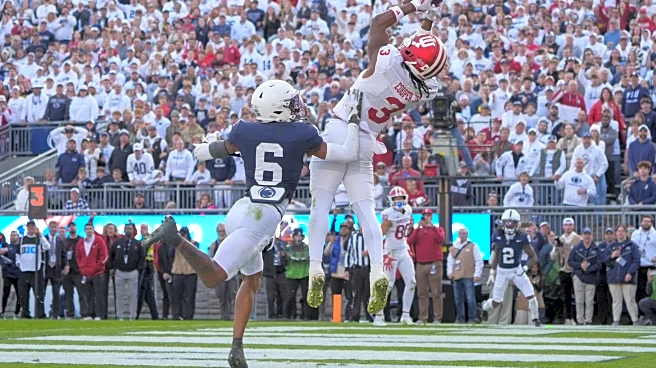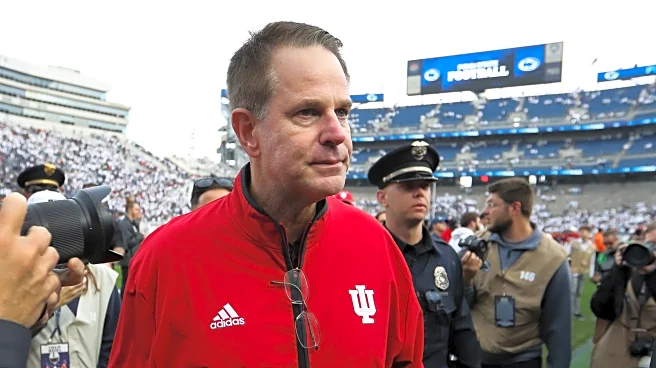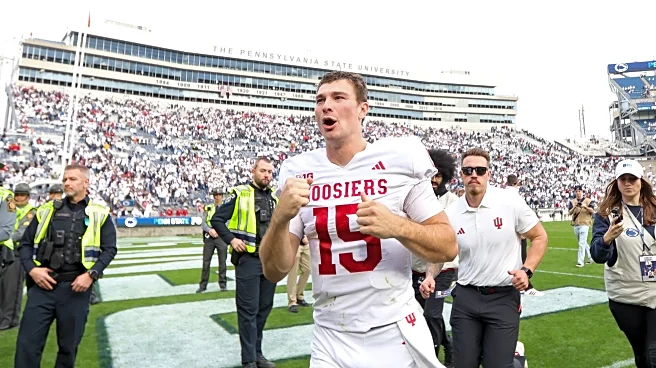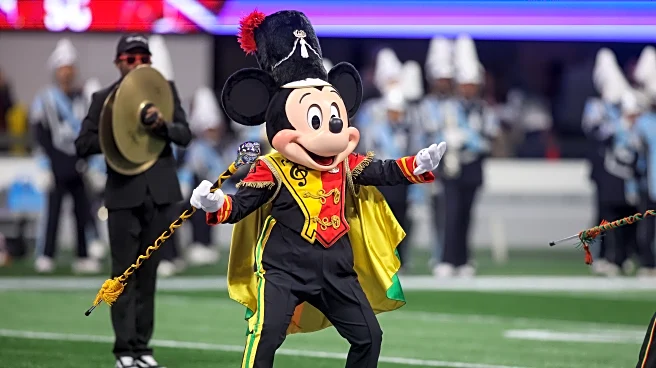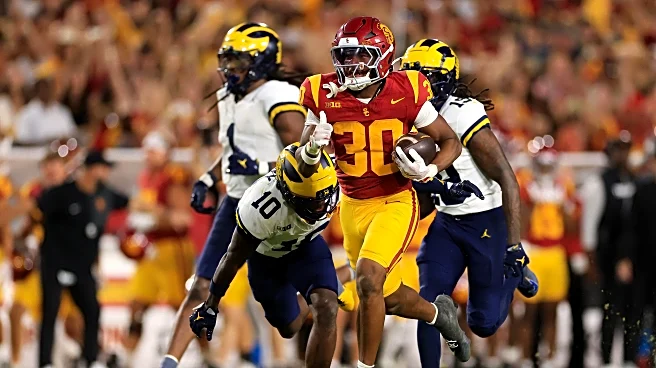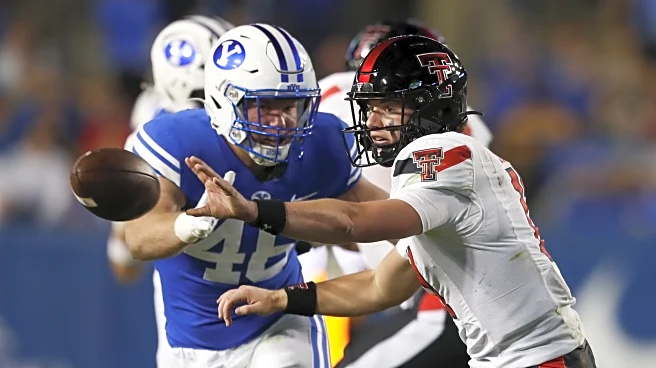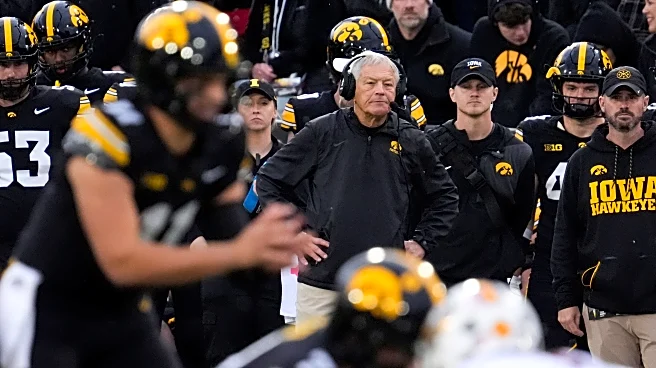Two weeks ago, I stood in a deluge, screaming at the top of my lungs. One play from that game against Wisconsin has stuck in my mind. Oregon’s defense began a sequence with Wisconsin backed up to the 1-yard
line. Teitum Tuioti wrapped up Gideon Ituka, ruled down inches past the goal line to avoid a safety. Many eyes in Autzen concurred that Ituka’s elbow was down prior to the ball crossing the goal line. A lot of eyes, except the ones that count. Without a pylon cam, there wasn’t an angle with sufficient evidence to overturn the call on the field.
That play piqued a few questions, only some of which will be answered in this post.
- In a sport with so much money invested, where decisions regarding the sport have been made purely with more money in mind, why are pylon cams not standard in every match? It’s a game of inches, and only a shot straight down the line will allow the referees to get the call right. Queue comments about Georgia vs Auburn having a pylon cam and still not getting the goal line call right.
- What’s the likelihood that a defense gets a safety based on starting field position?
- Going a step further, based on the starting field position, how many expected points will an offense get?
As much as I’d like to, I can’t answer the pylon question. All I can say is that at least the call didn’t impact the result of the game. The answer to question two is much easier to answer. Since 2015, for games with at least one FBS team, 6.35% of drives starting on the offense’s 1-yard line ended in a safety. As expected, that percentage sharply declines the more breathing room an offense gets. It dips below 1% for all drives starting from the offense’s 9-yard line or further upfield.

I can’t remember the last time Oregon’s defense forced a safety. It hasn’t happened since 2015. Thanks to a mishap early in the rain against Iowa, Oregon has seen three longsnappers grant Oregon two points since 2015. In 2025, Oregon has had numerous drives with a chance for a safety thanks to Punter, James Ferguson-Reynolds, who has pinned opponents inside the 5-yard line five times this season. He has added another three punts inside the 10, another three inside the 20, and just one touchback. Zero! The number of returns allowed by Ferguson-Reynolds and Oregon’s punt coverage.
Prior to the Iowa game, 13 of Ferguson-Reynolds’ 17 punts either pinned the opponent within the 20-yard line or flipped 45+ yards of field position. Oregon’s starting defense has allowed just 14 points on drives immediately following a punt (both were late 4th quarter drives to give up the lead). With a special teams unit and defense this good, Oregon is equipped to play field position and beat traditional Big Ten teams at their own game. Here are the drive outcome rates by starting field position for games including at least one FBS team since 2015.

When narrowing to Oregon, we need to start bucketing the starting field position to avoid issues with sample size . Perhaps unsurprisingly, Oregon’s offense comes out ahead of the national average, scoring touchdowns at a higher rate across nearly the entire range of starting field positions. We at Addicted to Quack will excuse the lower rate of drives ending in field goals in favor of touchdowns. Oregon’s defense over the last decade has performed on par with the national average, with one area exceeding expectations. Oregon has had a plus defense when presented with extremely short fields (20 or fewer yards to the goal line).
Below is a scatter plot of Oregon’s 2024 and 2025 offensive drives, points scored vs starting field position. Darker points indicate more drives ending in that result. Unless otherwise stated, the most recent game against Iowa is not included in any of the data. Oregon has surprisingly come up short of the endzone with the advantage of a shorter field in recent years.
Oregon’s scoring defense is much improved. While one of the short field points on the scatterplot below is a bit misleading (Indiana kneeling the ball), it’s apparent that Oregon doesn’t allow points very often. Personally, I think Oregon’s scoring defense is underrated. This chart doesn’t account for garbage time. Rutgers and Northwestern collectively tallied three garbage-time touchdowns with starters being rested. Wisconsin added another off a flukish, wildly underthrown, but completed deep ball.
If there is one area to harp on this elite Oregon defense, it’s that they have had one or two coverage busts a game. Otherwise, the secondary has been stellar. Only one QB has thrown for over 200 yards against Oregon this year. The secondary will face a tough task in two weeks guarding USC’s Ja’Kobi Lane and Makai Lemon, who is ranked 1st among power conference players in receiving yards (937). That is realistically the only team on Oregon’s remaining schedule with a chance to eclipse 200 yards passing.
I had hoped to dive deeper into the stats of Oregon’s success on Special Teams, but I will have to save the rest for a future article. Perhaps a portal punter model is in order, with Oregon’s stellar punter being a Senior.
